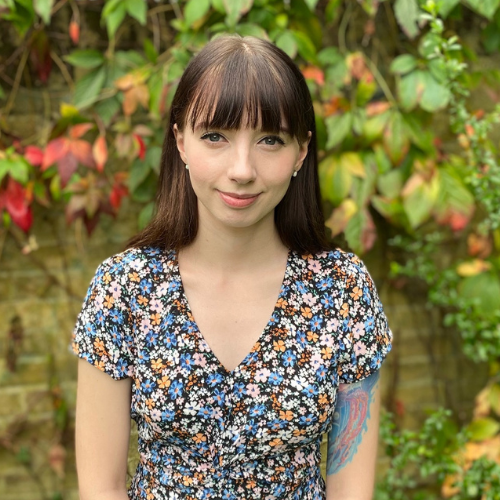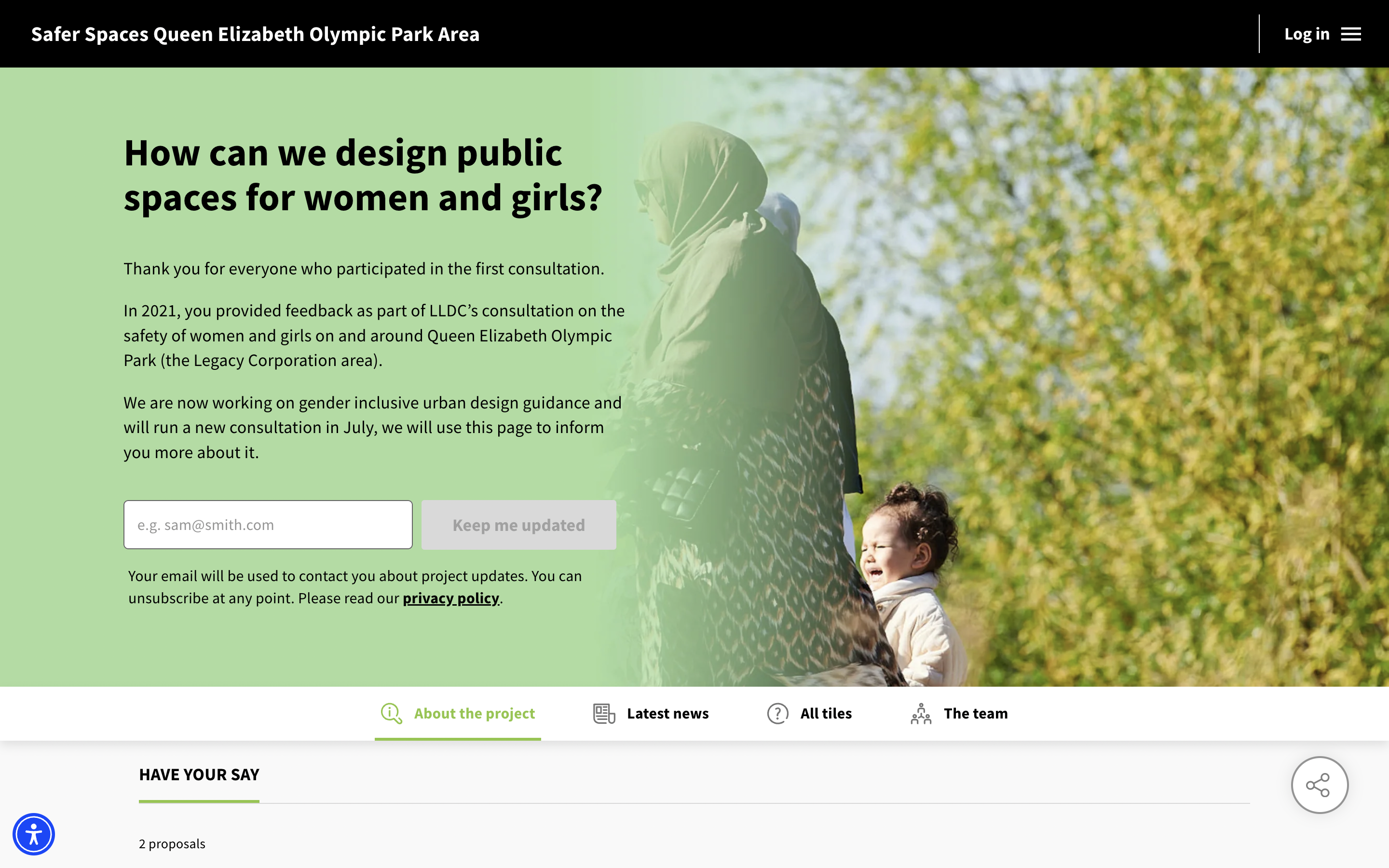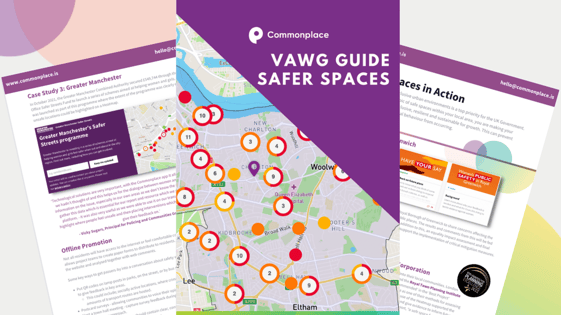LLDC: Safer Spaces in Queen Elizabeth Olympic Park

By Charlotte Cooper | Wed, Jan 17, 2024
4 min read
The London Legacy Development Corporation (LLDC) worked with Arup and used Commonplace as one of their methods for assessing and improving women's safety across the LLDC site: Queen Elizabeth Olympic Park. Their use of the Heatmap supported the initiative and allowed LLDC to prioritise key interventions and give evidence to inform future planning, design, and development work.
The platform was kept open for 11 weeks, from 26 September 2021 to 13 December 2021.
Project goal: Discover the main causes for people to feel unsafe on the site and create a report to follow up and take direct action.
Launch date: 26 September 2021
Visitors total: 6840
Contributions: 542
Visit the engagement website here

Background: Creating a safer Queen Elizabeth Olympic Park
In 2021, LLDC looked to improve the safety of women and girls on and around one of their newer sites: The Queen Elizabeth Olympic Park. Much like the Greenwich engagement of our previous study, our dedicated Safety Heatmap was used to gather data.
Our Safe Spaces platform is built in partnership with UN Women UK. Our partnership is based
on the idea of creating safer streets and using digital inclusion to understand the key problems for
women and girls. By using technology, women and girls from across the country are being encouraged to drop a pin on a map and detail safety issues specific to that area. More importantly, they can make
suggestions about how to tackle these problems directly, leading to a more balanced and
transparent approach to change.
With this, Safer Spaces Queen Elizabeth Olympic Park Area was born.
On top of the engagement website...
To complement the online survey, particularly where the respondent’s demographic data showed gaps in responses from certain groups, a focus group was run to engage them. The consultation was also promoted via contacts who work with local community networks to help communicate and encourage participation from typically underrepresented groups.
What were the results of the safety engagement?
- 85% of respondents did not identify as men.
- 39% of all responses rated their location as ‘Very unsafe’, and 37% as ‘Somewhat unsafe’. Only 3.5% of responses rated the area as ‘Very safe.’
- In all areas in the park, the average response was either ‘Very unsafe’, ‘Somewhat unsafe’, or ‘Neither safe nor unsafe’.
Following this data collection, ARUP produced the Safety of Women and Girls in Consultation Report in 2022, stating that “As a planning authority, landowner, developer and regeneration body, LLDC has a transformative impact across the development corporation area and therefore has a responsibility to ensure developments coming forward contribute to creating a safe and welcoming environment for all, and particularly women and girls.”
They first did a thorough literature review of the key themes related to women and girls' safety before using these to guide the information gathered from their consultation. This included highlighting intersectionality:
Inequalities in terms of race, sexuality, and gender are often reviewed in isolation, disregarding the experiences of those individuals who are disadvantaged by them all…. Intersectionality, and the experiences of all women, should be considered when designing built environments for, and with, women. This includes, but is not exclusive to, racialised, and ageing, LGBTQIA+, and disabled women. It also includes women with different employment statuses and who are living in or at risk of deprivation.
It’s why this report is both trans and non-binary inclusive.
If you'd like a more in-depth look at our Safer Spaces Heatmap and the work Commonplace and our customers have done to fight violence against women and girls, download our free eBook below!

How do women and girls use public space?
What was also highlighted was how women and girls use public spaces. Women and girls are a varied group and their use of public space will change over the course of a lifetime: young girls may need inclusive spaces for play, working-aged women may travel to work, parents with young children need spaces that can accommodate their families and pushchairs. Women of all ages may attend events or entertainments that require use of public space at night. Disabled women, pregnant women, and older women who use mobility aids will have specific physical and access needs from external space.
There isn’t one all-encompassing woman’s experience. So all that is key when making planning decisions.
Key themes pulled from the consultation
A few key themes were found in the literature review and subsequently used with their consultation data. These were the top three findings and subsequent actions taken:
- Lighting: Lighting is the most important built environment design factor in influencing people’s perceptions of safety in public places. Well-lit places not only seem safer but on the whole- are. This finding is mirrored in the outcomes of the Legacy Corporation consultation. 65% of respondents reported feeling unsafe due to poor lighting; 80% reported that it would improve areas.
Key actions taken:
-
- Lighting and vulnerability assessment
- Site-wide lighting strategy
- Stakeholders to collaborate to implement and maintain lighting conditions along routes
- Alternative routes identified and signposted
- Intimidation, harassment and groups of men: This theme encompasses a wide variety of behaviours and experiences in public space, ranging from physical assaults and catcalling to more insidious behaviours such as being followed and being stared at. According to a 2021 UN Women Yougov survey, 71% of all women in the UK have experienced sexual harassment in a public space, rising to 86% of 18–24-year-olds.
Key actions taken:
- Rearrangement of seating and street furniture to cluster inwards rather than face outwards, to allow people to gather in groups while allowing pedestrians to pass with less observation
- Lighting patterns were added to light areas adjacent to routes – for example, low-level sensitive lighting in bushes at the side of paths.
- Supporting provision of training to transport and planning professionals to help reduce harassment in public places.
- Support initiatives were suggested for schools to raise awareness and educate young people about harassment and safety in public spaces.
- Isolation and fear: Isolation, being alone, and the feeling that there is nobody around to assist can increase a sense of fear in people using external space. A 2021 study by the ONS found that, after dark, while 50% of women feel unsafe walking alone near their homes, 80% feel unsafe walking alone in parks or open spaces. This indicates it is more than the fact of being alone that generates fear: it is the physical quality and use of the space you are alone in. In the consultation, responses were often cited in areas where there were long linear walking routes with limited options to leave.
Key actions taken:
- Along quiet routes, they plan to provide alternative exit points at frequent intervals to enable another path to be taken, away from any quiet, isolated areas that are not overlooked.
- Light and signpost exit routes clearly. Provide visual landmarks and increased visibility to destinations, to minimise the feeling of being on a long, isolated route of uncertain length
Check out their full report here
Make sure to check out the full engagement website below!
Visit the engagement website here
Or, if you're looking to run your own safety engagement, book a chat with one of our experts.
.png)

